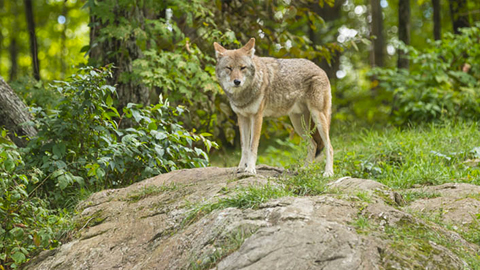Snapshot of The Impacts of New Trail Construction on Wildlife

Outdoor enthusiasts face an exasperating paradox—does their being in the wilderness harm the wilderness? Trails into the backcountry allow people to connect with nature, exercise, and learn about natural and cultural resources. But there is also the possibility that the presence of trails—especially as they are being constructed—extend human disturbance into otherwise secluded areas, and harm the places people have come to admire.
Recent research from Anna Miller, IORT Assistant Director of Research, examines clues about how much new hiking trails (during construction, and immediately after), affect several animals in Stone Mountain State Park, North Carolina. Trails certainly change natural landscapes by fragmenting animal habitats, spreading invasive plant species, and changing soil, plant, and water patterns. Miller wanted to know more about immediate on-the-ground shifts in animal populations caused by trails. She used motion-sensitive cameras to monitor sites before, during and after new trail construction in a controlled experiment.
She found a mixed bag of animal responses. White-tailed deer and coyotes decreased their activity on and near the new trails during construction, while raccoons happily moved into the disturbed area (perhaps to take advantage of the insects and nuts uncovered by newly upturned soil). After construction was complete, activity from all three species returned to pre-trail levels. Eastern gray squirrels, on the other hand, were scarce near the trail area after construction, and changed their daily schedule in response to the new environment. Deer also made a change—they became more active throughout the day, rather than what would be typical for this primarily crepuscular species (active early in the morning, and again in the evening), likely to avoid the human traffic.
While trail building may alter habitat quality for some species, the impact was concentrated during the construction phase, and was fairly minor in the short-term for the species in this study, said Miller. In other studies, raccoons, bears, turkeys, and bobcats have avoided heavily used trails (more than 100 people per day), while red foxes and gray squirrels used such trails more frequently than trails with lower human use levels.
If managers want to help minimize impacts of new trail construction, it may be a good idea to keep the trail construction work within as short a time-frame as possible, said Miller, and to schedule it during a season when sensitive and important species will be less affected.

